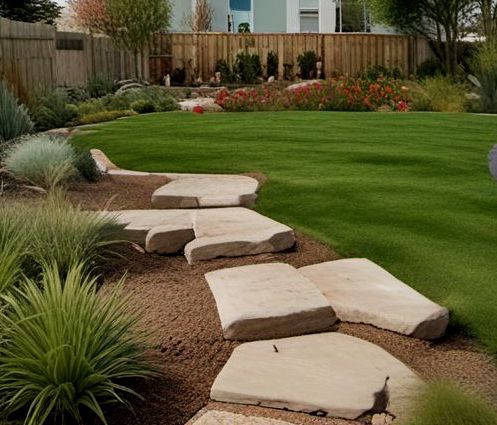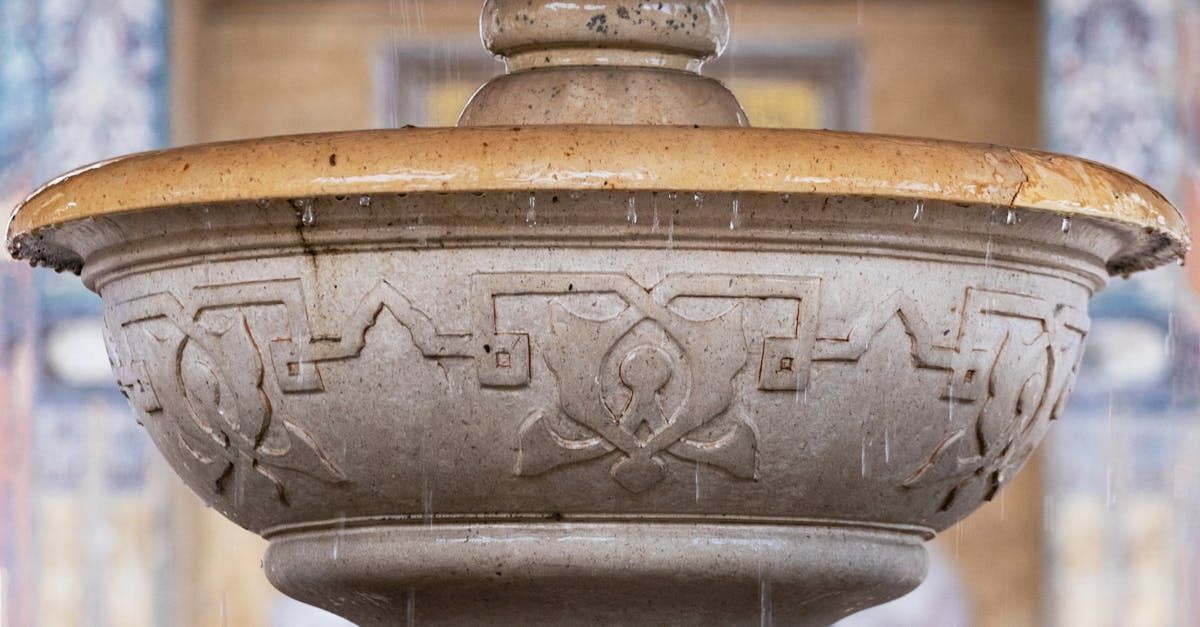Hardscaping your yard in style
Find what materials to use, structures to build, land to upheave or new projects to renovate before the adventure begins your new lifestyle!
Bring value to your front yard and backyard!
Hardscaping is the non-living elements in a landscape composition that provide structure, functionality, and artistry to outdoor spaces. It involves the use of various construction materials to create features such as patios, walkways, retaining walls, and other architectural elements. We will explore different types of hardscaping, and the materials used, and provide examples of how they can enhance outdoor spaces.
1. Patios:
Patios are outdoor spaces designed for dining, entertaining, or relaxation. They can be constructed using various materials such as concrete, pavers, natural stone, or brick. Patios are durable and can be customized with different finishes and colors. Paver patios offer a wide range of layout options and are easy to install. Natural stone patios, such as flagstone or slate, provide a unique and natural look. Brick patios are classic and can be laid in different patterns, adding charm to any outdoor area.
2. Walkways:
Walkways serve as pathways that guide people to their intended destination. They can be made from materials like concrete, pavers, natural stone, or gravel. Concrete walkways are versatile and can be poured into any shape or size. Paver walkways offer a wide range of possibilities and can be easily replaced if damaged. Natural stone walkways create a rustic and organic feel, blending seamlessly with the surrounding landscape. Gravel walkways provide a more casual and cost-effective option.
3. Retaining Walls:
Retaining walls are used to hold back soil and create level areas in sloped landscapes. They can be constructed using materials such as concrete blocks, natural stone, or timber. Concrete block retaining walls are durable and can be organized to fit any space. Natural stone retaining walls provide a more natural and elegant look, blending well with the environment. Timber retaining walls offer a rustic and warm aesthetic, often used in more informal settings.
4. Outdoor Fireplaces:
Outdoor fireplaces are hardscape features that provide warmth and create a cozy atmosphere in outdoor spaces. They can be constructed using materials like stone, brick, or concrete. Stone fireplaces offer a natural and rustic look, blending well with natural surroundings. Brick fireplaces provide a classic and timeless appearance. Concrete fireplaces offer a more modern and sleek construction.
5. Water Features:
Water features, such as fountains, ponds, or waterfalls, can enhance the ambiance of outdoor spaces. They can be constructed using materials like stone, concrete, or fiberglass. Stone water features provide a natural and organic look, creating a soothing and tranquil atmosphere. Concrete water features offer versatility and can be customized to fit any space. Fiberglass water features are lightweight and easy to install, providing a cost-effective option.
6. Outdoor Kitchen:
Outdoor kitchens are becoming increasingly popular, allowing homeowners to cook and entertain outdoors. They can be constructed using materials like stone, brick, or concrete. Stone outdoor kitchens offer a natural and elegant look, blending seamlessly with the surrounding landscape. Brick outdoor kitchens provide a classic and timeless appearance. Concrete outdoor kitchens offer a more modern and sleek design, often complemented with stainless steel appliances.
7. Arbors and Pergolas:
Arbors and pergolas are hardscape structures that provide shade and support for climbing plants. They can be constructed using materials like wood, vinyl, or metal. Wood arbors and pergolas offer a natural and traditional look, often made from cedar or redwood. Vinyl arbors and pergolas provide a low-maintenance option and can be customized with different colors and finishes. Metal arbors and pergolas offer a more contemporary and industrial view.
In conclusion, hardscaping plays a vital role in creating functional and visually appealing outdoor spaces. By using various construction materials such as concrete, pavers, natural stone, brick, timber, or metal, homeowners can create patios, walkways, retaining walls, outdoor fireplaces, water features, outdoor kitchens, and arbors/pergolas that enhance the overall aesthetics and functionality of their landscapes. Whether you prefer a modern, rustic, or classic design, there are endless possibilities to transform your outdoor space into a beautiful and inviting environment.

Things to consider before launching your hardscape design
DIY or Hire a Contractor: Before diving into your hardscape landscape design, carefully weigh the decision between undertaking the project yourself or hiring a professional contractor. Assess your skill level, the complexity of the design, and the potential challenges involved. Hiring a contractor may bring expertise and efficiency, ensuring a polished outcome, while a DIY approach offers a hands-on, personalized touch with the understanding that it requires time, dedication, and skill. We believe you can do it but we would rather partner with you on your fun new outdoor adventure!
Size of the Project Area: The scale of your hardscape project significantly influences its design and execution especially when you want to incorporate large-scale designs such as fireplaces, kitchens, or water features. Consider the spatial constraints, proportions, and intended use of the area. A larger project will demand more intricate planning, specialized equipment that a professional can offer, and a comprehensive design strategy, while smaller spaces might allow for more detailed and intricate features that enhance the overall aesthetics.
Maintenance and Repair: Factor in the long-term maintenance and potential repair needs of your hardscape elements. Opt for materials and designs that align with your maintenance preferences and schedule. Choosing durable materials and investing in proper installation can minimize the need for frequent repairs, ensuring your hardscape remains both visually appealing and structurally sound over time. After a dedicated team puts these things into play for your home, the DIY approach becomes a more attainable goal.
Water Usage: Efficient water management is crucial in hardscape design, particularly in regions where water conservation is a priority. Integrate permeable materials, like porous pavers, to promote water drainage and reduce runoff. Consider incorporating features such as water-efficient irrigation systems or strategically placed elements that help conserve water, aligning your hardscape with sustainable landscaping practices.
Codes, Local Regulations, Permits, and HOA Requirements: Make sure you discuss with your designer about compliance with local building codes, regulations, and any necessary permits before embarking on your hardscape project. Check if your homeowners association (HOA) has specific guidelines or restrictions. Familiarize yourself with zoning requirements to avoid potential legal issues and guarantee that your design not only meets aesthetic preferences but also adheres to the necessary regulatory standards in your area.

Home Page
We will get back to you as soon as possible.
Please try again later.
FAQS
Hardscaping questions and answers for your Landscaping in Georgetown, Tx
-
What are the benefits of incorporating hardscaping into outdoor spaces?
Hardscaping can increase functionality, provide structure and organization, define spaces, reduce maintenance, and enhance the aesthetic appeal and value of a property.
-
How do I choose the right materials for my hardscape project?
Consider factors such as durability, cost, aesthetics, and maintenance requirements, as well as how well the materials complement the overall design and existing landscape features.
-
What are some popular hardscape features?
Popular hardscape features include patios, decks, pathways, driveways, fire pits, water features, seating walls, outdoor kitchens, and pergolas.
-
How do I ensure proper drainage in hardscape design?
Proper grading, the use of permeable materials, and installation of drainage systems such as French drains or channel drains can help manage water runoff and prevent erosion and flooding. Get with Georgetown Landscaping design team.
-
Can hardscaping be combined with softscaping?
Yes, hardscaping and softscaping elements can be combined to create a balanced and cohesive outdoor environment. For example, hardscape features like pathways and retaining walls can be softened with planting beds and landscaping.
-
How do I plan and design a hardscape project?
Start by assessing the site, considering factors such as existing structures, topography, sun exposure, and desired use of the space. Develop a design that addresses functional needs, aesthetic preferences, and budget constraints.
-
What is the average lifespan of hardscape materials?
Lifespan varies depending on material and maintenance, but generally, durable materials like concrete, natural stone, and brick can last decades with proper care and maintenance.
The regions leading professionals in landscaping, design and lawn care services
All Rights Reserved | Georgetown Landscaping
Locations: